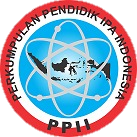USE OF 3D-VISUALIZATION MEDIA IN NUCLEOPHILIC SUBSTITUTION REACTION MATERIAL TO IMPROVE STUDENTS' CONCEPT MASTERY
DOI:
https://doi.org/10.15575/jtk.v5i2.9820Keywords:
3D visualization media, concept mastery, nucleophilic substitution reactionsAbstract
Development of technology is increasingly rapid today, including in the field of education. Technological developments are sometimes not used properly in the learning process, so that students not actively studying in class. The purpose of this study was to determine the effect of using 3D visualization media on nucleophilic substitution reaction material to improve students' concept mastery. Research method used was a quasi-experiment with pre-test and post-test design, involved 68 students from two different universities in West Java. The test instrument to measure concept mastery consisted of nine reasoned multiple-choice questions. The results showed that the use of 3D visualization media in nucleophilic substitution reaction materials can improve students' mastery of concepts. Based on the N-gain calculation results, University A was better than University B except for the indicators of determining that obtained a medium category and sorting that obtained a low category. There were four indicators of concept mastery used, including determining, analyzing, linking, and sorting indicators.References
Abraham, M., Varghese, V., & Tang, H. (2010). Using molecular representations to aid students understanding of stereochemical concepts. Journal of Chemical Education, 87(12), 1425-1429. https://doi.org/10.1021/ed100497f
Appling, J. R., & Peake, L. C. (2004). Instructional technology and molecular visualization. Journal of science education and technology, 13(3), 361-365. Retrieved from https://www.jstor.org/stable/40186655
Barnea, N., & Dori, Y. J. (1999). High-school chemistry students’ performance and gender differences in a computerized molecular modeling learning environment. Journal of Science Education and Technology, 8, 257–271. https://doi.org/10.1023/A:1009436509753
Bharathy, J. B. (2015). Importance of computer assisted teaching & learning methods for chemistry. Science, 3(4), 11-16. https://doi.org/10.11648/j.sjedu.s.2015030401.13
Dimyati & Mudjiono. (2002). Belajar dan Pembelajaran. Jakarta: Rineka Cipta dan Depdikbud.
Fauzi, A. (2013). Pengaruh kemampuan akademik siswa terhadap keterampilan metakognitif hasil belajar biologi siswa kelas X dengan penerapan strategi pembelajaran kooperatif di Malang. Jurnal Pendidikan Hayati, 1(1), 56-69. Retrieved from https://www.researchgate.net/publication/322291755_Pengaruh_Kemampuan_Akademik_Terhadap_Keterampilan_Metakognitif_Dan_Retensi_Siswa_Pada_Pembelajaran_Biologi_Kelas_X_Dengan_Penerapan_Strategi_Jigsaw
Firman, H. (2018). Asesmen Pembelajaran Kimia. Bandung: Sekolah Pascasarjana Universitas Pendidikan Indonesia.
Hornbuckle, S. F., Gobin, L., & Thurman, S. N. (2014). Spatial reasoning: improvement of imagery and abilities in sophomore organic chemistry. Perspective to enhance student learning. Contemporary Issues in Education Research, 7(1), 45-50. https://doi.org/10.19030/cier.v7i1.8311
Prasinta, J. D., Kadaritna, N., & Tania, L. (2018). Efektivitas model pembelajaran ADI dalam meningkatkan penguasaan konsep siswa berdasarkan kemampuan akademik. Jurnal Pendidikan dan Pembelajaran Kimia, 7(2), 1-14. Retrieved from http://jurnal.fkip.unila.ac.id/index.php/JPK/article/view/16222
Raiyn, J., & Rayan, A. (2015). How chemicals’ drawing and modelling improve chemistry teaching in colleges of education. World Journal of Chemical Education, 3(1), 1-4.
https://doi.org/ 10.12691/wjce-3-1-1
Rinaningsih, R. (2014). Implementasi model perkuliahan terpadu sorogan-bandongan untuk menentukan pemahaman mahasiswa dalam mempelajari mekanisme reaksi. Jurnal Pengajaran MIPA, 19(2), 266-274. https://doi.org/10.18269/jpmipa.v19i2.469
Setyarini, M., Liliasari, L., Kadarohman, A., & Martoprawiro, M. A. (2017). Efektivitas pembelajaran stereokimia berbasis visualisasi 3D molekul untuk meningkatkan kemampuan spasial. Cakrawala Pendidikan, 36(1), 91-101. https://doi.org/10.21831/cp.v36i1.11082
Slameto. (2003). Belajar dan Faktor-faktor yang Mempengaruhinya. Jakarta: Rineka Cipta.
Urhahne, D., Nick, S., & Schanze, S. (2009). The effect of three-dimensional simulations on the understanding of chemical structures and their properties. Research in science education, 39(4), 495-513. Retrieved from https://www.learntechlib.org/p/104351/
Widiyowati, I. I. (2014). Hubungan pemahaman konsep struktur atom dan sistem periodik unsur dengan hasil belajar kimia pada pokok bahasan ikatan kimia. Jurnal Pendidikan, 3(4), 99- 116. Retrieved from https://jurnal.unej.ac.id/index.php/pancaran/article/view/989
Wu, H. K., & Shah, P. (2004). Exploring visuospatial thinking in chemistry learning. Science Education, 88, 465–492. http://dx.doi.org/10.1002/sce.10126
Zielesny, A. (2005). Chemistry software package ChemOffice Ultra 2005. Journal of Chemical Information and Modeling, 45(5), 1474-1477. https://doi.org/10.1021/ci050273j
Downloads
Published
Issue
Section
License
Authors who publish with this journal agree to the following terms:
- Authors retain copyright and grant the journal right of first publication with the work simultaneously licensed under a  Creative Commons Attribution-ShareAlike that allows others to share the work with an acknowledgement of the work's authorship and initial publication in this journal.
- Authors are able to enter into separate, additional contractual arrangements for the non-exclusive distribution of the journal's published version of the work (e.g., post it to an institutional repository or publish it in a book), with an acknowledgement of its initial publication in this journal.
- Authors are permitted and encouraged to post their work online (e.g., in institutional repositories or on their website) prior to and during the submission process, as it can lead to productive exchanges, as well as earlier and greater citation of published work (See The Effect of Open Access).








